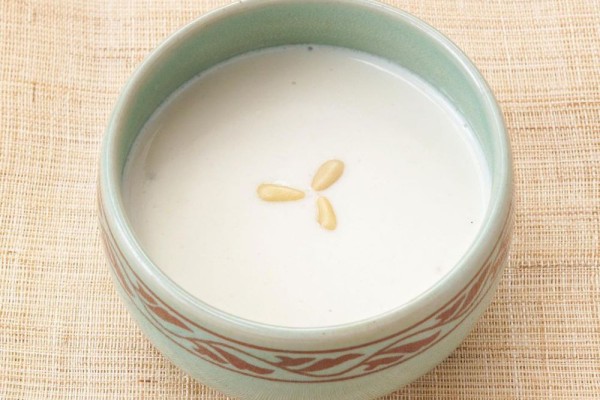

povarishka.com, Jakarta – Welcome to a flavorful journey exploring the world of porridge made from various types of flour! Porridge, a humble dish with roots in numerous cultures, holds a special place on breakfast tables worldwide. Join us as we delve into the history, recipes, and cultural significance of this beloved comfort food across different countries. Let’s uncover the heartwarming stories behind each bowl of steaming goodness!
The History of Porridge
Porridge has been a staple dish in many cultures for centuries, with its origins dating back to ancient times. The history of porridge can be traced across various countries and regions, where it was enjoyed by people from different walks of life. In Scotland, porridge holds a special place in tradition and is often served as part of breakfast or even as a main meal. It symbolizes comfort and sustenance, reflecting the rugged landscape and harsh weather conditions that Scots have endured over the years.
In China, congee is a type of porridge made from rice flour that has been consumed for thousands of years. It is believed to have medicinal properties and is often served to those who are sick or recovering from illness. Across Africa, porridges made from maize flour or millet are common dishes that provide nourishment and energy to communities. These recipes have been passed down through generations, each one adding its unique blend of flavors and ingredients. The history of porridge reveals how this humble dish has evolved over time, adapting to local preferences and ingredients while remaining a comforting meal enjoyed by many around the world.
Different Types of Flour Used in Porridge
When it comes to making porridge, the type of flour used plays a crucial role in determining the texture and flavor of this comforting dish. Various countries around the world have their own unique preferences when it comes to selecting flour for porridge-making. In Indonesia, rice flour is commonly used to make Bubur Sumsum, a creamy and sweet porridge made from coconut milk and palm sugar. This dish is often enjoyed as a dessert or snack.
In Scotland, oats are the primary choice for making traditional Scottish oatmeal porridge. The hearty texture and nutty flavor of oats make this breakfast staple a favorite among locals. In Africa, maize meal or cornflour is frequently used to create dishes like Ugali Porridge, which is known for its thick consistency and ability to keep you feeling full for hours. Regardless of the type of flour used, each variation brings its own unique taste and cultural significance to the table when it comes to preparing delicious porridge dishes from around the globe.
Traditional Porridge Recipes from Around the World
Porridge is a beloved dish that transcends borders and cultures, with each region infusing its own unique flavors and ingredients into this humble yet comforting meal. In Indonesia, Bubur Ayam stands out as a popular choice made from rice flour cooked in chicken broth and topped with shredded chicken, crispy shallots, and a drizzle of savory soy sauce.
Moving to Scotland, the traditional Scottish porridge is made from oats simmered in water or milk until thickened to perfection. Often served with a dollop of cream or honey for added sweetness. Over in Nigeria, Ogi – also known as Pap – takes center stage as a cornmeal porridge enjoyed with various toppings like groundnuts or dried fish. In South Korea, Juk reigns supreme as rice flour boiled with vegetables or meats to create hearty bowls of nourishment. And not forgetting the iconic American grits made from cornmeal cooked slowly until creamy and served alongside butter or cheese for that extra indulgence.
Cultural Significance and Traditions Associated with Porridge
Porridge holds a special place in the culinary traditions of various countries, serving as more than just a meal. In Indonesia, porridge made from flour is known as “Bubur,” and it symbolizes comfort, warmth, and togetherness. Families gather around steaming bowls of Bubur during celebrations or times of need, sharing stories and strengthening bonds.
In Scotland, oatmeal porridge is a staple that dates back centuries. It was considered food for warriors due to its energy-boosting properties. The act of stirring porridge clockwise with a wooden spoon is believed to bring good luck and ward off evil spirits. In Japan, rice porridge or “Okayu” has been used for generations as a healing dish for the sick or elderly. Its simple yet nourishing qualities showcase the Japanese value of simplicity and respect for ingredients. Across cultures, porridge signifies care and nurturing – whether it’s preparing it for someone under the weather or sharing it at communal gatherings.
Health Benefits of Eating Porridge
Porridge made from flour is not only a delicious and comforting dish but also boasts a range of health benefits that make it a popular choice for many. One of the main advantages of consuming porridge regularly is its high fiber content, which aids in digestion and helps keep you feeling full longer. Additionally, porridge is often low in fat and sugar, making it a nutritious option for those looking to maintain a balanced diet.
The complex carbohydrates found in porridge provide a steady release of energy throughout the day, helping to sustain your body’s fuel levels without causing sudden spikes or crashes. This can be particularly beneficial for individuals seeking to manage their weight or regulate their blood sugar levels. Furthermore, porridge is often rich in essential vitamins and minerals like iron, magnesium, and B vitamins that are vital for overall health and well-being. By incorporating different types of flour-based porridges into your diet, you can enjoy these numerous health benefits while savoring diverse flavors from around the world.
Conclusion
To conclude, porridge made from flour is a staple dish enjoyed in various countries around the world. From the creamy Bubur Sumsum in Indonesia to the hearty Farina in the United States, each culture has its own unique version of this comforting meal. Whether it’s served sweet or savory, hot or cold, porridge not only fills our stomachs but also warms our hearts with its rich history and cultural significance. So next time you’re looking for a wholesome and satisfying meal, consider trying out a traditional porridge recipe from a different corner of the globe – you might just discover your new favorite comfort food!






